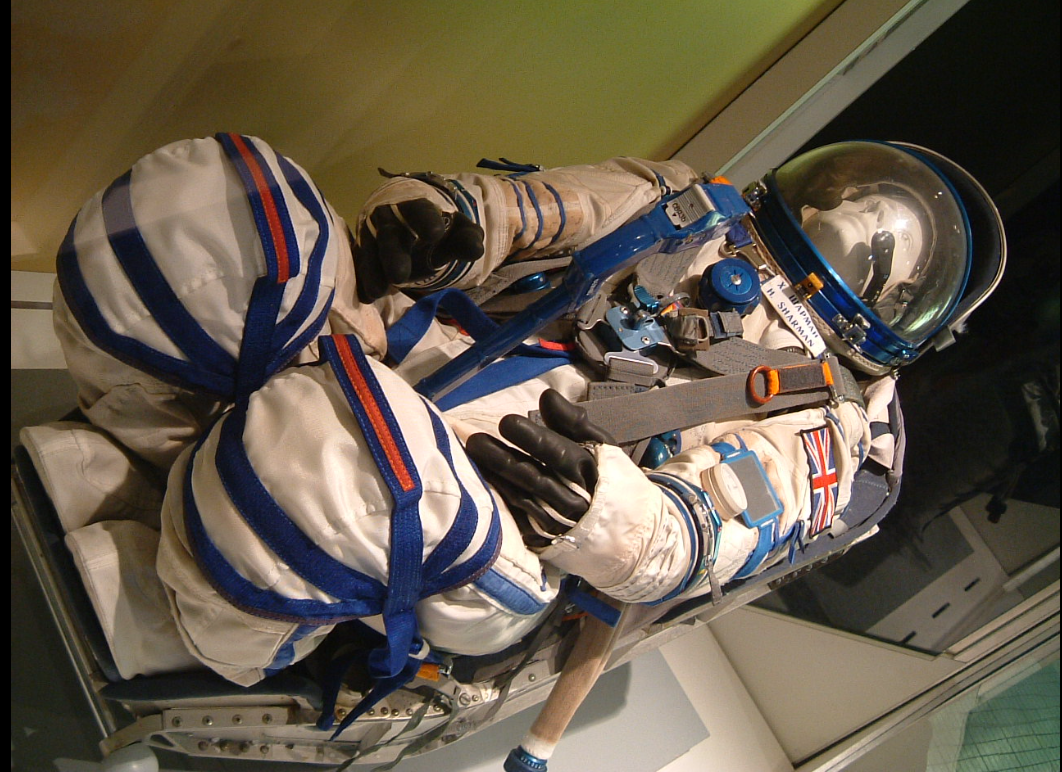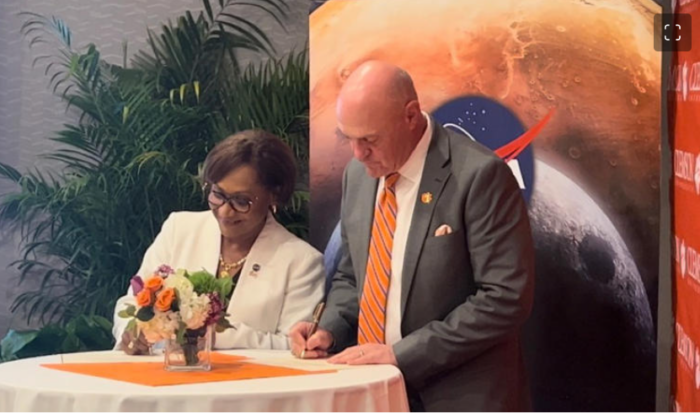Helen Sharman became the very first British individual to venture into space in 1991. Not only did she achieve that, but she also earned the distinction of being the inaugural Western European woman to achieve the feat. Her historic voyage also included a groundbreaking visit to the Mir Space Station, making her the pioneering woman to set foot on that celestial outpost.
Born in 1963, in the city of Sheffield, Sharman’s educational journey was equally impressive, earning a Bachelor of Science degree in chemistry from the University of Sheffield in 1984. Her curiosity then led her to commence a doctoral program at Birkbeck College in London, where she delved into the fascinating world of rare earth elements and their unique ability to emit a captivating blue light. However, her academic pursuits were momentarily eclipsed by her cosmic aspirations, and she departed without completing her Ph.D.
The pivotal turning point in Helen’s life came when she answered a radio advertisement seeking applicants for the coveted position of the first British space explorer. From a staggering pool of nearly 13,000 hopefuls, Sharman emerged as the chosen one.
Beyond her remarkable journey through the cosmos, Sharman is a multi-talented individual. She penned her autobiography, titled Seize the Moment, in 1993, offering a captivating glimpse into her life’s extraordinary chapters. In 1997, she extended her literary reach to children, publishing a delightful book called The Space Place.
Sharman’s influence extends beyond the written word, as she has lent her expertise to the airwaves by presenting radio and television programs, including contributions to BBC Schools. Perhaps most significantly, she passionately encourages the younger generation to embark on careers in the exciting realm of science, ensuring that her legacy inspires future generations to reach for the stars.
Recently, Sharman sat down for an interview at The Naked Scientists. Based at Cambridge University’s Institute of Continuing Education (ICE), the Naked Scientists are a team of scientists, doctors and communicators whose passion is to help the general public understand and engage with the worlds of science, technology and medicine.
“[…]As a child I would never have imagined going to space,” began Sharman when asked about how it all started. “I was brought up to basically keep my head down, do normal stuff. We don’t do anything particularly exciting, particularly different in our family or in our school. You know, we went to a very normal school in the north of Sheffield.”
Sharman then said the family relocated to the southern outskirts of Sheffield, an adventure that seemed entirely unfamiliar to her. None of her school friends had ever embarked on such a journey, and the notion of space exploration remained a far-off fantasy. After all, Great Britain lacked a space agency, let alone a program dedicated to human spaceflight, she said and the prospect of venturing into space didn’t even qualify as a distant aspiration for her — it was simply beyond the realm of possibility.
She opted to pursue studies in the sciences primarily to keep her future options open. Although she held a vague interest in manufacturing, her family’s background had no connection to that field. They were educators and healthcare professionals, with no ties to the world of manufacturing. Consequently, she was uncertain about the path to enter this industry. Nevertheless, the concept of transforming raw materials into valuable products intrigued the future cosmonaut.
Thus, she enrolled in university to study chemistry. Frankly, her choice could have leaned toward any scientific or engineering discipline. Chemistry simply appeared to be a versatile option, allowing for potential transitions into biology or physics later on. This decision marked the inception of Sharman’s career in science, driven primarily by the desire to maintain flexibility in her career choices.
As her degree neared its conclusion, she faced the daunting task of selecting a job. Those were the days before the internet had become ubiquitous — a notion that might seem inconceivable today. Back then, one had to visit the university’s career office and sift through countless paper application forms. She applied to every position seeking a graduate chemist because Sharman was uncertain about the opportunities available. Surprisingly, she received multiple job offers, ultimately choosing from a selection of six or eight positions.
“And I got a choice of jobs. I think I had six, eight jobs, something like that, in the end to choose from. So really great opportunities and ended up in the electronics industry making display screens. And that was where I started my part-time PhD,” said Sharman.
She embarked on a career in the electronics industry, specializing in the production of display screens. It was during this period that Sharman initiated her part-time Ph.D. journey, a pattern that persisted throughout her academic pursuits. After several years of working on display screens, which she thoroughly enjoyed, Sharman recognized that it was time for a change. Consequently, she transitioned into the confectionery industry, where she had the privilege of working for Mars Confectionery.
“As soon as the newspapers found out, you know, ‘a girl from Mars goes to the stars’, ‘Helen blasts off from one Milky Way’ and there were puns on galaxies,” said Sharman. “Oh, you can just imagine. Worse and worse. But yeah, I was enjoying my job. I worked on ice cream, chocolate, you know, loads of science of course. And at school, I could never have imagined using science in the electronics industry, but also to make chocolate. You know you just make chocolate, don’t you? But you know, the science and the engineering, the technology required to make confectionery at scale at a cost that is reasonable so people can afford to buy it. And, all of that was just fascinating. I loved it.”
When asked whether she was doing the chocolate bar job when she saw the ad to become an astronaut, her answer was as such:
“Yes. I was actually just driving home from work one evening. I could say I was driving home from Mars, but that’s a bit of pushing the pun a bit too far but not driving home from work, listening to the radio and again, pre-internet.”
Back then, she mentioned, discovering job opportunities was a different process. They were often advertised in newspapers, academic journals and occasionally even on the radio.
And then, as if by fate, a remarkable announcement graced the airwaves via Sharman’s car radio: “Astronaut wanted. No experience necessary.” Her ears perked up, and she listened intently as it outlined this incredible prospect. They were in search of a candidate from Britain to journey to the Soviet Union, train alongside cosmonauts, and conduct experiments aboard the Mir space station. Without hesitation, Sharman applied for the position, just as one would apply for any other job opportunity.
“You had to, first of all, phone in. There was some sort of call centre and they asked some very basic conversations, questions about, did you have some languages?” answered Sharman, asked about what she had to send in by the interviewer. “They wanted us to have some manual dexterity and to still have a practical job. So they were asking questions about what I did for my job and when they ascertained that I was a reasonable candidate, then they sent me an application form and that was the standard few pages where you have to fill in the questions but actually then you have that blank page at the end, ‘why you should choose me.’ And you know, I was so certain that they’d never choose me. I never photocopied that application form. So to this day, I don’t know what I wrote about that.”
Sharman felt the need to be utterly honest, when asked about what she wrote, recalling the entertaining idea of embellishing her qualifications, but then it struck her: what if they saw through the facade? She wasn’t entirely certain about their criteria anyway; it was all quite unfamiliar territory for her. So, as she navigated the application process and underwent the battery of psychological tests, Sharman made a conscious decision not to overthink it. Instead, she opted to embrace the experience wholeheartedly.
Her approach was simple: be genuine and forthright, and let things unfold naturally. Rather than attempting to anticipate their every expectation, Sharman chose to immerse herself in the process and absorb as much as possible along the way.
What happened next? Did a letter drop through the letterbox? Is that what happened? the interviewer then asked.
“So they may well have telephoned me and left a message on my home answer machine because it was even pre-mobile days,” said Sharman. “You know, it’s just quite incredible to think how we used to communicate then. And that would be when I would’ve been asked to go for the first part, medical, psychological tests. And then gradually they whittled us down so that there were 16 of us going to be whizzed around in a room in a centrifuge to look at how we could cope with the acceleration G-force during launch and so on.
“And some of the more space flight-specific medicals, motion sickness for instance. And they didn’t want us to be motion sick, so they try to choose people who are not generally motion sick on Earth. So there were those sorts of tests. And yeah, gradually then there were four of us left. We went off to a Moscow hospital for two weeks. And then I remember it being one awful evening, live national TV where it was announced which two of us were actually going to be going to Russia and doing the training and which two would remain in Britain as sort of backups. But two of us.
“So, you know, I didn’t know was I going into space or if was I going to be the backup. And of course, I always assumed I would be the backup. You know, the guy who was the army pilot. Blonde hair, blue eyes, he was bound to fly. The woman from the chocolate factory, she’d be the backup, wouldn’t she? This is the trouble with coming from that kind of idea that it would never be me and lacking confidence as a youngster. It took me a long time to get over that, that imposter syndrome I think took a while to get over,” concluded Sharman.
Featured image: Sokol space suit worn by Sharman, at the National Space Centre in Leicester. Credit: Alan Saunders (Kaptain Kobold) from Staines, UK. This file is licensed under the Creative Commons Attribution 2.0 Generic license.
Share this article:








